Spencer: Dressing an Icon
 Thursday, November 11, 2021 at 8:00PM
Thursday, November 11, 2021 at 8:00PM Spencer is proving itself a divisive picture. Even among The Film Experience team, some hate it, and some love it. Still, reading through plenty of negative reviews, one can find some elements capable of surviving the criticism, joining the two factions of the discourse around Spencer. So far, the costumes seem to be earning quasi-unanimous praise. Two-time Academy Award winner Jacqueline Durran is a beloved artist, capable of facing the challenge of dressing an icon with obstinate virtuosity. Evoking the ghost of Princess Diana, or rather a stylistic impression of her, the designer has created one of the most ravishing wardrobes of the cinematic year, a masterpiece of sartorial indulgence that befits the movie's melodramatic verve…
As played by Kristen Stewart, conceptualized by Pablo Larraín and Steven Knight, and styled by Durran, Spencer's Princess Diana is akin to a cubist painting. Rather than searching and exposing the real person - whatever that might mean - the cineastes conjure a multiplicity of perspectives flattened into one jagged portrait, all shatters and broken angles. We see a suggestion of reality, of the private Princess as imagined through her public persona. We understand the media facsimile that our memory carries to the movie, whether we want it or not. Stewart and her persona are the final pieces of the puzzle.
We never forget how miscast she feels while also embodying a fractious relationship with public attention that one might project unto Diana. Instead of disappearing into the role, she adds a slew of other faces to this chimeric Princess, this hydra with infinite visages. We see all of this simultaneously, on the same dimensional plane, crushed and compressed. It's as fascinatingly ugly as a Picasso, a collage that's all about performances inside performances inside performances. Consequently, Durran's work is more dependent on those imperfect impressions than on some perfect recreation.
Copies appear in different contexts than the original, remixed, like a song that samples a classic, not a cover. For her entire career, Durran's played with these dichotomies of design, working paradoxical levels of accuracy and stylization into period costuming. Search through Youtube, read a bunch of historical costume blogs, and you might find a considerable dislike for Durran's repudiation of strict accuracy. Little Women brings modern sensibilities to bohemian mid-19th century fashions, trying to tie a contemporary perception of womanhood with a text whose specificities are chained to the historical past.
Atonement sees the interwar and WWII years as a dream through the lens of Vogue editorials. Anna Karenina is an operatic intersection of Dior haute couture and bustle gown fashion. Pride & Prejudice excises the formality of Regency clothes and uses anachronism to convey a fleeting sense of summery sensuality. Beauty and the Beast is a hallucination of sparkly Rococo style twisted by Disney fantasy, and Macbeth is a nightmare of faux-Medieval affectations. Spencer draws from those projects' sense of exuberance, but its execution feels more purposefully constricted.
Durran's collaborations with Mike Leigh and Steve McQueen are closer to what Larraín gets from the designer, a celebration of period specificities that's still in service of an abstract mood. Part of it comes from the wealth of documentation available, the obsessive ways the public has embalmed every detail of Princess Diana's life. Add royal protocol to that, and it's possible to understand the aristocrat's regimental style with military precision. As the film shows us, everything was planned out, a different outfit for each of the day's many activities.
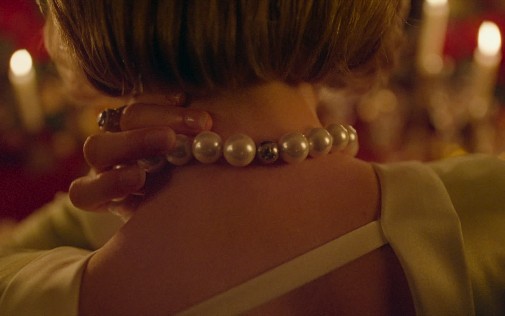
While one might regard fashion as a liberating part of Diana's legacy, Spencer envisions it as one more prison. A bulky pearl necklace becomes a dog collar as well as a refraction of Anne Boleyn's famous B pendant. A backless green dress is an expression of the vulnerability others want to impose on the principal figure. It also rhymes with the soup Diana gazes upon like a deer looks at headlights. These symbolic gestures full of sartorial portent reflect the movie's fabulist intentions, how it draws fake fiction from actual tragedies. Some outfits were chosen not because they represent what the Princess wore at Sandringham on Christmas 1991 but because they echoed the celebrity's iconography from years before and after.
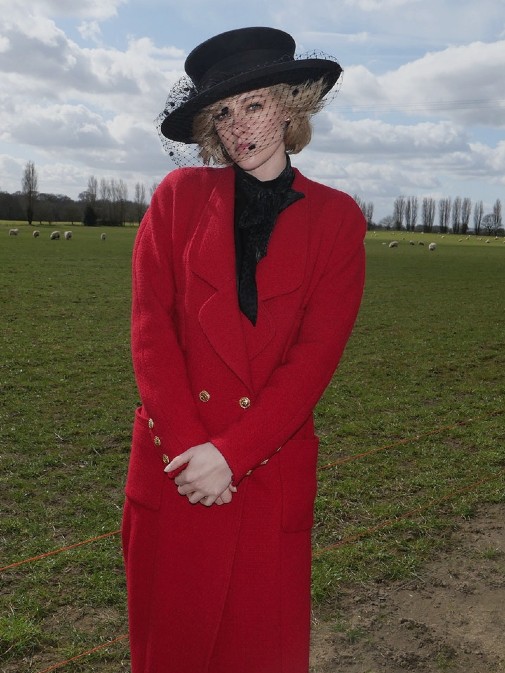
A red coat nods towards ensembles of the mid-90s, while some jewels came from early 80s Royal tours. Other pieces still originated in non-Diana resources, coming straight from contemporary fashion. They're dissonant notes in a symphony. They fracture the period splendor, grounding this Diana to 2021, to the time of the story's telling rather than the time of the action. Chanel, with whom Stewart has a partnership, provided archival pieces and modern reconstructions, accessories from their latest collections. For all this serious fashion analysis, there's levity to be found amid Spencer's stylistic absurdities.

The yellow suit with a matching hat feels like an impish nod towards revolution through that exuberant tricorn design that's later gifted to a scarecrow. Durran may call it a pirate hat, but I hear the Marsellaise when I look at it. That wink full of Gallic cheek isn't a one-time phenomenon either. For the key gown that has adorned most of the promotional images for Spencer, Durran pulled a Lagerfeld original design from the late-80s, but its skirts are made fuller for the big screen. As Stewart walks erratically through the palace corridors, the cumbersome nature of high fashion is impossible to ignore. Every step causes a wobble of pleats that's reminiscent of a duck's clumsy step.
Earlier, when she parades through a diner in vintage Chanel, Stewart looks like a parody of a noblewoman doing some working-class tourism. Another critical factor is the contrast with proper casual wear, the high-waisted jeans and ballet flats. Including such ensembles only makes the formality of royal pageantry look faker, more clownish than elegant. The pièce de résistance in Spencer isn't an individual costume, though, but a montage. When the picture reaches the maximum heights of its mad melodrama, Larraín and Durran unravel Diana through a series of looks. She dances through the palace with impossible freedom, subverting the codified pose each evening gown imposes.
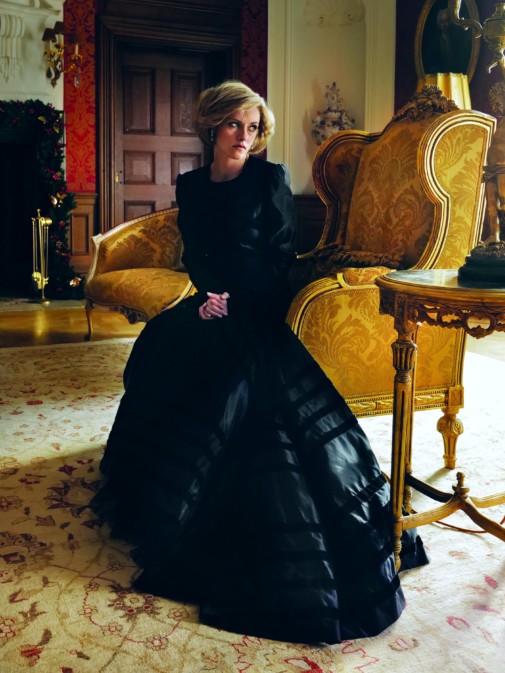
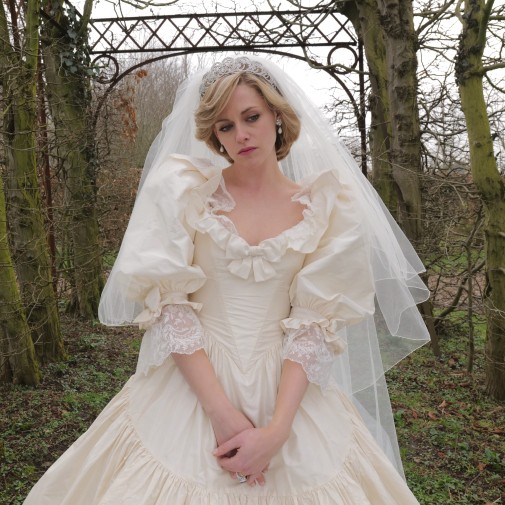
It's an orgiastic tsunami of fashion, color, and frippery as far as the eye can see. Nevertheless, there's melancholy to this spectacle. The replica of the princess' fairytale wedding dress is like a frothy reminder of hope lost. Diana's hauntings don't always take the shape of beheaded queens, after all. Sometimes, they're a ghost of herself. In that montage, there are also black gowns, deep velvet concoctions that remind the viewer of the black dress Diana was longing for earlier in the movie. It's as if, in this epiphanic ecstasy, the imagined idol is in mourning for her own person. Perchance it's the film itself grieving for the loss we all know looms in the future, the fate that hollows the putative happy ending, drains it of joy.
No matter how incredible Durran's dressing of Diana might be, one shouldn't ignore the rest of her work. The remaining Royal family is numerous and populates the background of many scenes. To costume them, the designer created archetypal summations of their persons – making it clear who was who, even if the text never spells it out. Also, just as the Princess of Wales changes clothes for each different activity, so do these glorified extras, inflating Spencer's wardrobe to monumental proportions. Primarily, though, these presences serve to make the protagonist stand apart. She's always wrong somehow, sticking out like a sore thumb. That dynamic isn't only present with the dreaded family either.
As mentioned before, the patrons of that roadside diner are a stark contrast to Diana's cosmopolitan chic wardrobe. The stench of obscene privilege follows the Princess around wherever she goes, and her relationship with servants is complicated, both visually and narratively. Indeed, when seeing her interact with those less powerful than she, one gets a sense of what a black hole Diana could be. Far from sanctifying the woman, Larraín and Durran make the contrasts comically savage. For example, as the princess' dresser, Sally Hawkins may wear a piece of delicate lace or a beaded string that serve as precious details in otherwise plain outfits. They’re marks of personality, stray ornaments on a working woman's humble attire. She wears it while standing next to a woman who looks like a couple of luxury brands vomited on her.
It's a prickly equilibrium that the team behind Spencer achieves with an aesthetic so ripe it's at the point of rotting. It's such an inebriating achievement, I wouldn't mind seeing Durran win a third Oscar for it.
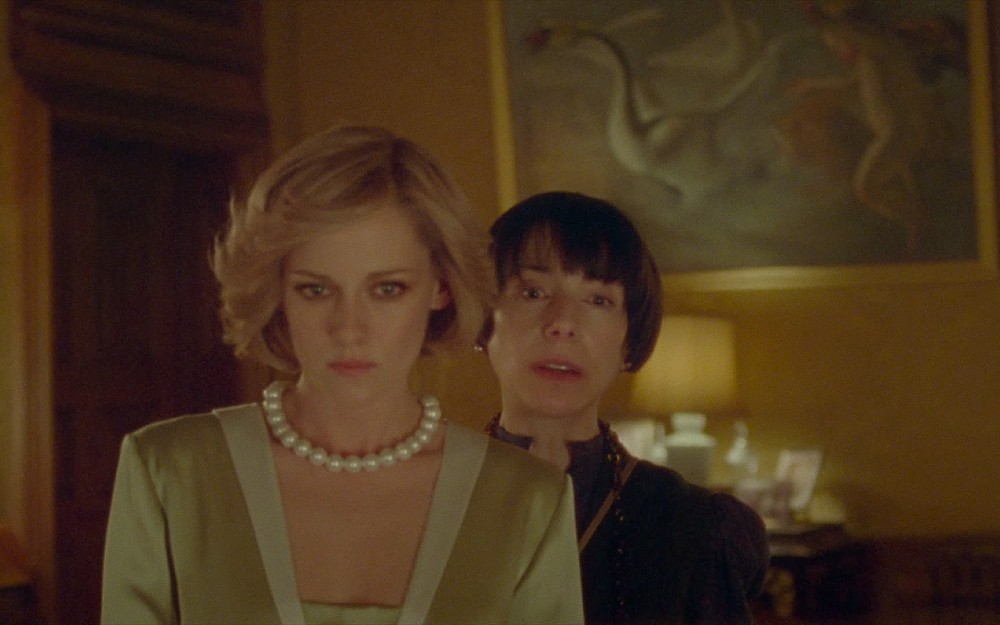
What's your favorite outfit from Spencer, and how do you think Durran will fare in the upcoming awards season?


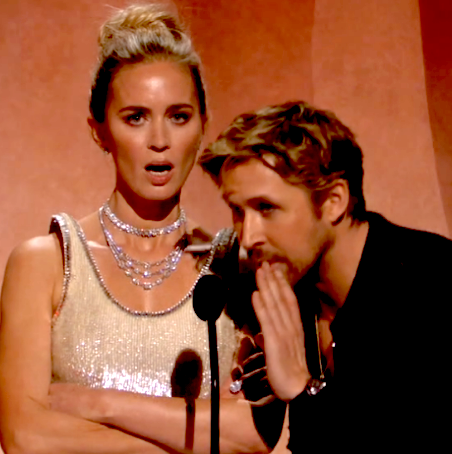
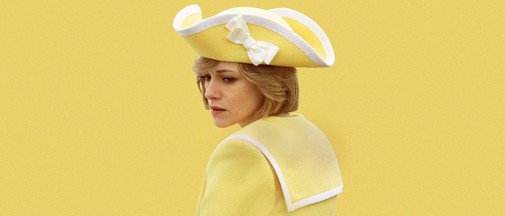
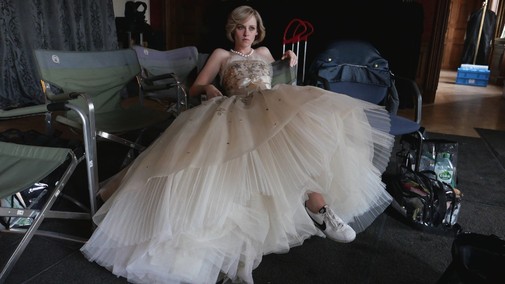
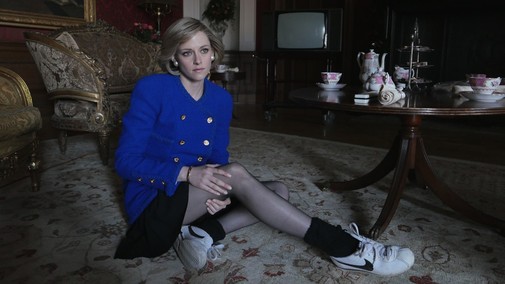
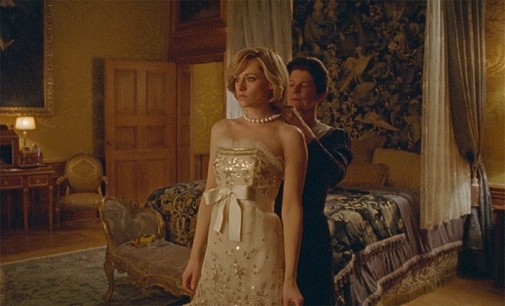
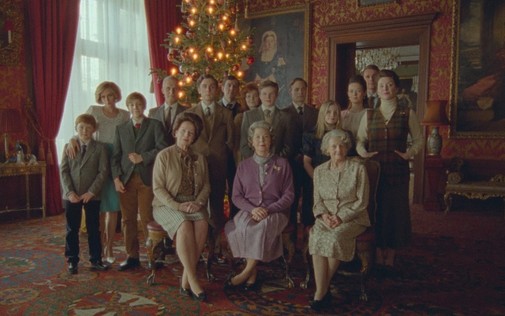
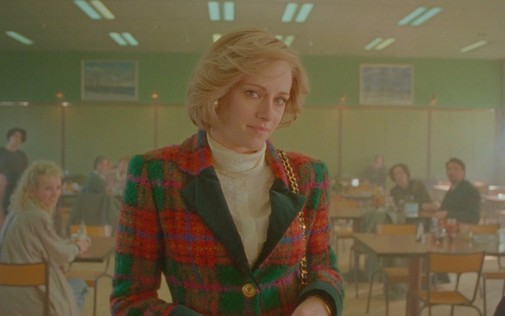
Reader Comments (7)
Oh, I like the one in the blue coat and Nikes.
If Jacqueline Durran has already won twice, I say it's time to give the next Oscar to someone else. It's kind of crazy how in the craft categories people seem to run up win after win after win. I'm talking about you Sandy Powell, and I LOVE you, Sandy Powell.
thevoid99 -- That's a behind-the-scenes shot, sorry. The socks and shoes don't appear in the movie.
Dan H -- I tend to agree with that. I won't mind another Durran win. At least, she'd fully deserve it this time (looking at you LITTLE WOMEN, even though I love you). Right now, I'd be more inclined to give the win to either Derica Cole Washington or Malgosia Turzanska.
That being said, I wonder if this race will whittle down to a battle of former winners - Beavan vs Durran vs Yates. Though, as always, I might be wrong. Knowing how terrible I am at predictions, I'm probably wrong :)
Although I'm partial to that black gown and most of the white (or white-ish) ones, Durran has once again created an iconic green look (and the scenes that go with it are indelible as well).
I am no costume aficionado but you really draw me in with these insightful pieces. I love how you zone in on arcane little details that completely passed me by (the 'impish nod to revolution' for instance).
I love Jacqueline Durran's work! Another exquisite job done.
What Luke said.
Hard to choose a favorite, but I do rather love her opening ensemble because of its (ironic) Christmas colors and how much they make her stick out even more than she already did at that diner.
Also, hated those pearls - as I think we're meant to. A "choker" indeed.
And finally, this is not about costumes but that bowl cut inflicted on Sally Hawkins has got to be one of the ugliest and most unflattering 'dos I've ever seen.